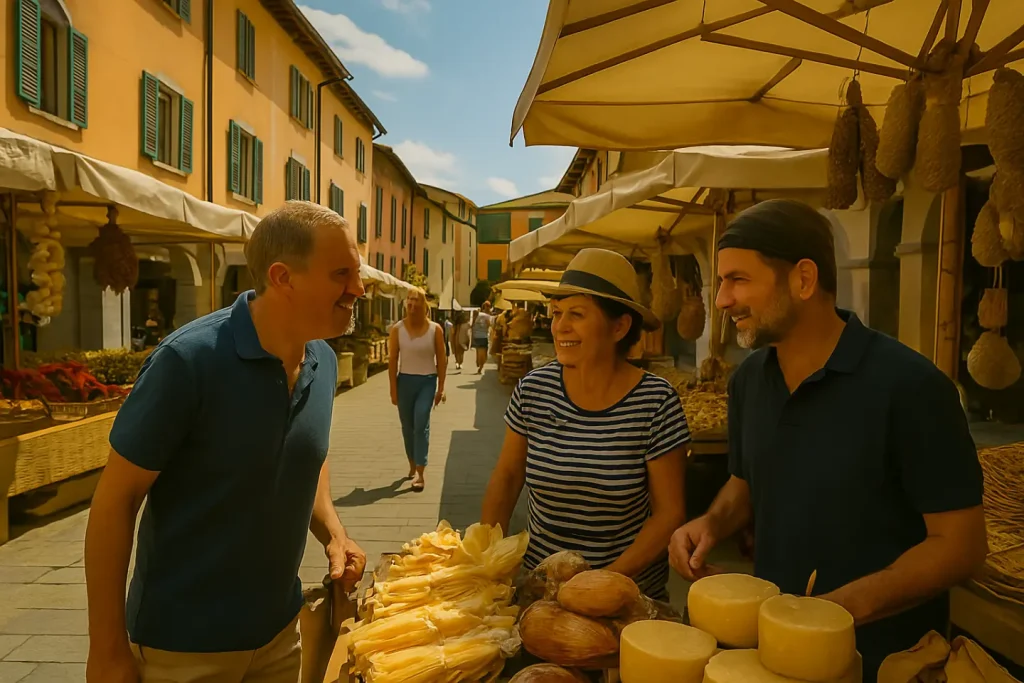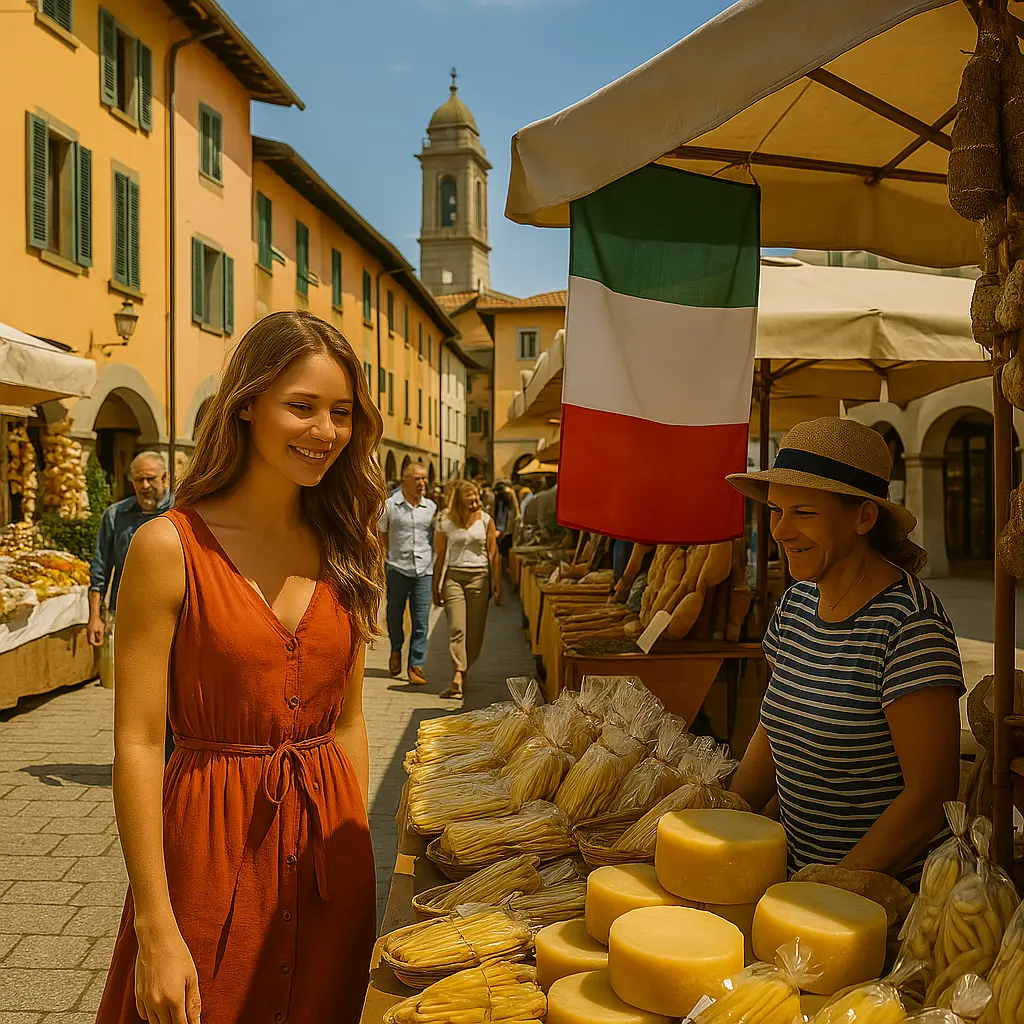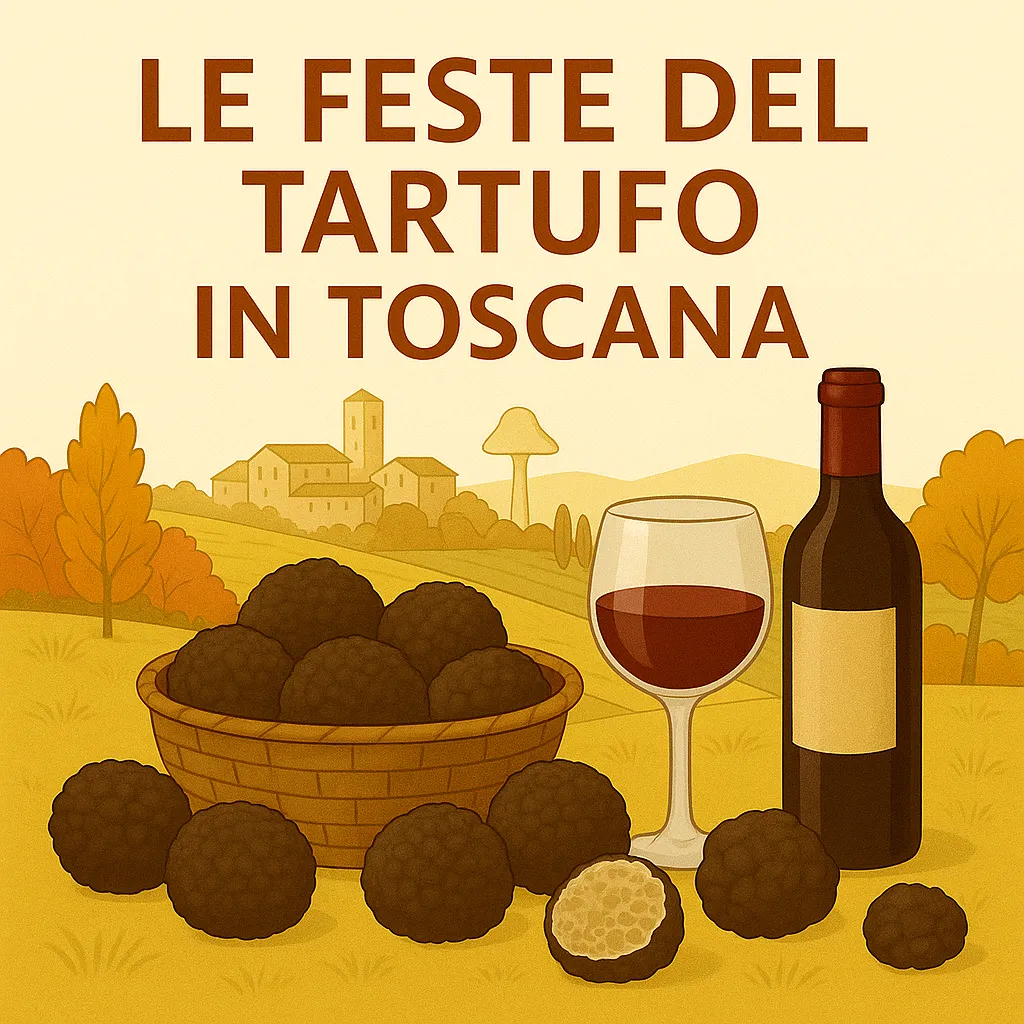Discovering Italy through its local markets is one of the most authentic ways to get in touch with the culture, people and creativity of each territory. Markets are the beating heart of cities, villages and the countryside, where tradition and innovation meet, and where it is possible to find the best of Made in Italy: artisan, gastronomic, textile and artistic products.
In this article we will guide you on a journey through Italy’s most representative markets, from north to south, highlighting local specialties, the best days to visit them, what to buy, and why they are an essential stop for those who love to discover the real Italy.
Why visit local Italian markets
Visiting markets is not just a shopping experience, but a true cultural and sensory journey. Here are some good reasons to include them in every Italian itinerary:
- Authentic experience: markets are living places, where you can breathe the soul of the local community.
- Unique and quality products-each stall tells a story through handmade items and wholesome food.
- Meeting with producers: you have the opportunity to speak directly with artisans and farmers.
- Sustainability: buying at the market often means choosing local, seasonal and zero-mile products.
- Slow tourism: walking among the stalls means slowing down, observing and really experiencing a place.
Types of markets in Italy
1. Food markets.
Present in every town or village, they are often organized weekly and offer fruits, vegetables, meat, fish, cheeses, meats, breads, and typical regional products.
- Famous examples: Rialto Market (Venice), Mercato delle Erbe (Bologna), Mercato del Capo (Palermo).
2. Handicraft markets
Perfect for those seeking uniqueness: each region has its own excellence, from Deruta pottery to Scarperia knives, from Sardinian fabrics to Venetian masks.
- Specialties: leather goods, ceramics, handmade jewelry, embroidery, blown glass.
3. Antique markets
Ideal venues for vintage and collectibles enthusiasts. Often held monthly, attracting visitors from all over Italy.
- Famous markets: Arezzo, Milan Navigli, Lucca, Ferrara.
4. Flea and thrift markets.
More informal, eclectic, fun. They offer second-hand clothing, oddball items, books, vinyls, modern antiques.
- Recommended: Porta Portese (Rome), Balon (Turin), Mercato di via Sannio (Milan).
5. Thematic and seasonal markets
They take place on special occasions and attract thousands of people: Christmas markets, medieval markets, food fairs, craft festivals.
- Don’t miss: Bolzano in December, Certaldo during Mercantia, Alba for the Truffle Fair.

Italy’s Most Authentic Local Markets.
Florence – San Lorenzo Market
Famous for leather goods and handicrafts. Next door, the Mercato Centrale offers street food and Tuscan specialties.
- What to buy: leather bags, scarves, local handicrafts.
Bologna – Mercato delle Erbe
Renovated indoor market with food stalls and eateries. Great for tasting lasagna, tigelle, tortellini.
- What to buy: cheeses from Emilia, cured meats, fresh pasta.
Palermo – Ballarò Market
Colorful, chaotic, irresistible. Amid shouts of vendors, scents of spices and street food.
- What to buy: pancakes, spices, exotic fruits, Arab-Sicilian handicrafts.
Rome – Campo de’ Fiori and Porta Portese
The former is a downtown food and tourist market; the latter, on Sunday mornings, is a parallel universe where you can find everything.
- What to buy: handmade pasta, used books, vinyls, curios.
Turin – Porta Palazzo Market
Europe’s largest outdoor market. Multiethnic, colorful, with products from every corner of the world.
- What to buy: fruits, spices, textiles, ethnic items.
Catania – Fish Market
A sensory experience: amid shouts, sea scents, knives filleting fresh fish.
- What to buy: fish, citrus fruits, Sicilian cheeses.
Lucca – Monthly craft market
In the squares of the historic center, an elegant market with artisans, artists and creative people.
- What to buy: artwork, Tuscan textiles, hand-painted ceramics.
Lecce – Sant’Oronzo Market
In the heart of Salento Baroque, a local market where you can find agricultural products, preserves, bread, oil and typical sweets.
- What to buy: taralli, oil, Leccese sweets.
How to organize a visit to a market
- Inquire about opening hours and days: not all are open every day.
- Arrive early: to avoid crowds and find the best products.
- Bring cash: many vendors do not accept cards.
- Reusable bag: best to avoid plastic bags.
- Talk to vendors: they often tell anecdotes and offer tastings.
- Eat locally: many markets have quality food corners or street food.
What markets represent for Italian identity
Markets are not only places for economic exchange, but also for cultural exchange. They are a space for sociability, where people meet, discuss, observe. They reflect neighborhood identity, food habits, local creativity.
In the markets you can find the real Italy: the one made up of dialects, calloused hands, recipes handed down, smells of home.
Thematic itineraries in local markets
Shopping and crafts in Tuscany
A tour between Florence, Arezzo, Lucca and Siena, discovering art markets, leather goods, ceramics, local products.
Food and wine tours in Emilia-Romagna
Covered markets in Bologna, Modena and Parma to taste cured meats, cheeses, wines and fresh pasta.
Urban experience in Rome and Naples
From the most popular markets to the most touristy ones, where past and present coexist.
Frontier markets in South Tyrol
To discover South Tyrolean products, speck, cheeses, wood crafts, Austrian influences.
Southern markets: folklore and authenticity
Palermo, Catania, Lecce, Taranto. Strong colors, voices, street theater and intense flavors.
Conclusion
Local markets represent a living cultural heritage, capable of telling the story, traditions and identity of every corner of Italy. They offer the traveler the opportunity to take home much more than an object or an ingredient: a fragment of humanity, a tangible memory, an authentic emotion.
If you would like to explore the most authentic markets with an expert guide, including storytelling, tastings, and meetings with local artisans and producers, Tuscany By GC organizes customized itineraries designed to let you experience the truest Italy. Contact us to create together your experience among the markets of Made in Italy!



